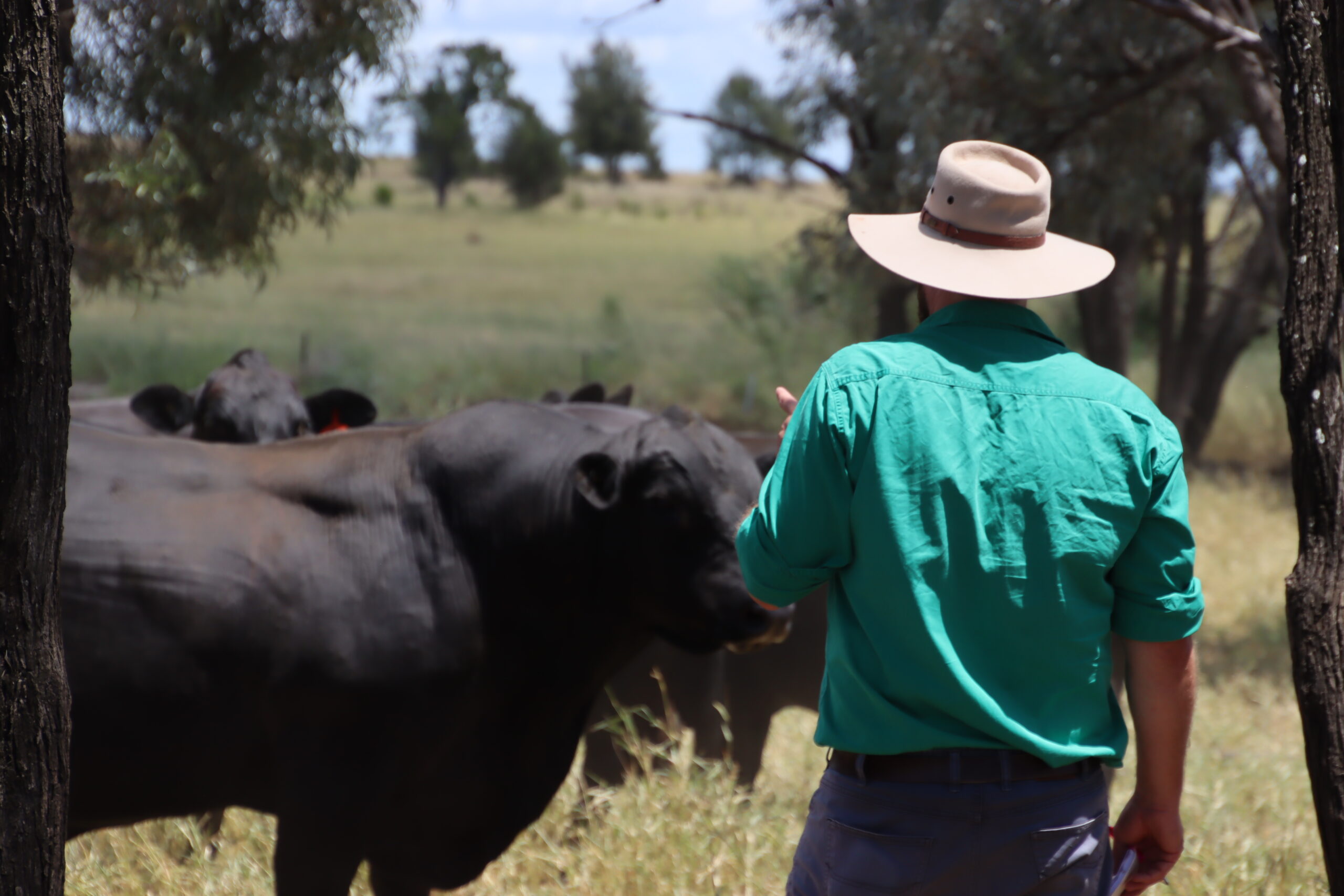Bull buying considerations
 If you’re the person responsible for buying bulls for a business, a friendly reminder:
If you’re the person responsible for buying bulls for a business, a friendly reminder:
Your selections will have an influence on the genetic direction and profitability of the herd for over a decade.
This being said, wouldn’t you want to make use of the tools available to you so you can make more informed, objective decisions?
Going by sale reports over time, many think not, with purchases driven solely by visual appeal — an expensive gamble.
More than skin deep
When purchasing a bull, you’re ultimately buying a package of genes. In order to pass on these genetics however, the bull must first and foremost, be fertile. A veterinary bull breeding soundness evaluation (VBBSE) or BULLCHECKTM, is an assessment that identifies risk factors for a bull’s potential to be fertile in the future, using a set of standards developed by the Australian Cattle Veterinarians.
Prior to purchasing a bull, it’s highly recommended that you request a BULLCHECKTM report, including a semen morphology assessment. This will provide you a clear understanding of the level of risk associated with using the bull for a particular purpose.
Additionally, be sure to ask seedstock producers about the selection pressure they apply to their herd. Do their breeding objectives align with yours? Or, will buying one of their bulls address a gap in your own program? And, while you’re at it, ask if the bulls on offer have been tested free of pestivirus, and be sure to ask about their vaccination routine and biosecurity programs.
On the topic of using a bull to address a particular gap, it’s strongly encouraged that your business has clear, written, breeding objectives. It’s important that you’re focused on where you want to head (in relation to where you’re at now) and what traits you need to be placing emphasis on, to get you there.
Tools of the trade
Estimated breeding values (EBVs) provide an estimate of an animal’s genetic merit for a particular trait. EBVs are a tool that have been available for more than 30 years to assist with driving genetic improvement.
A number of research projects and demonstration sites conducted across various years, locations and breeds, have clearly shown that EBVs provide an accurate prediction of genetic merit, with the expected difference in the progeny, and the actual difference, closely aligning for various traits.
As a refresher, included in the calculation of EBVs are the animal’s own performance, the performance of known relatives, the heritability of each trait, the relationship between the different traits, and in some breeds (five at present), genomic (DNA) information. EBVs can be expressed as a positive, negative or zero value, and it’s important to remember that a negative value doesn’t always denote being undesirable. This is certainly the case for the fertility trait, ‘Days to Calving’, where a more negative figure is actually favourable.
Currently, you cannot compare EBVs across breeds (e.g. Santa Gertrudis vs Droughtmaster), however there are research projects currently being undertaken that are developing multibreed EBVs e.g. Repronomics, Southern Multibreed and the Northern BIN Steer Projects.
It is suggested to determine the most appropriate selection index that lines up with your breeding objectives and production system, giving consideration to individual EBVs where relevant, to assist in establishing a short-list of genetically desirable animal.
To look up EBVs, you can either visit the BREEDPLAN website or go through the relevant breed society website. There, you can find comprehensive information about how the bull you’re looking to buy stacks up across the varying traits, dam history, and if genetic conditions are of concern.
A number of sale catalogues can also be viewed online, with search and sort functions, allowing you to quickly identify those animals that are genetically suited to your requirements. Within a few seconds you can enter in the particular minimum/maximum EBVs you’re seeking, which may result in a sale catalogue being cut down from 150 animals to 30. By undertaking this process, you will save yourself time, shortlisting bulls that will take you in the direction you seek.
Spending ample time appraising each shortlisted animal for temperament and structural soundness is important, while excluding those that are unsuitable for your long-term breeding program.
Upon purchasing, implement measures to minimise risk to your new sire/s and the overall business.
Make a mile
If you’re genuinely committed to taking your herd forward, seriously consider making the most of tools such as BULLCHECKTM and EBVs. Both of these tools significantly minimise the guesswork, and in turn, reduce risk to the business.
You are now in the driver’s seat. You have the power to make positive changes this coming bull buying season.
Take home messages:
- Right now is the time to act.
- Review and revise your breeding objectives.
- Spend the time doing your homework.
- Identify the seedstock producers going the extra distance to provide you with endless objective information.
- Evaluate your current and potential sires, and,
- Be sure to ask for assistance if required.
Written by Tim Emery, Beef Extension Officer, Department of Agriculture and Fisheries (Roma), 0408 707 155 or timothy.emery@daf.qld.gov.au